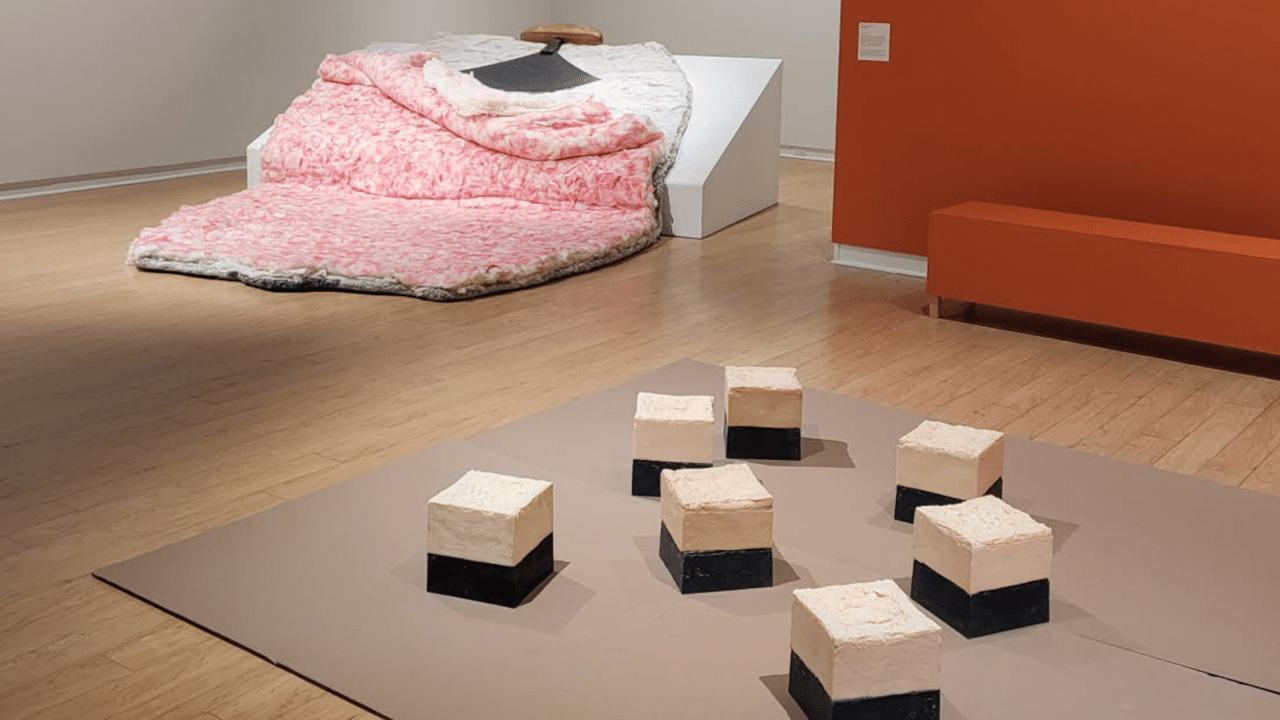On October 12th and 13th, Tomson Highway visited Peterborough to deliver a lecture and seminar as part of Trent’s W.L. Morton Lecture Series. W.L. Morton was a leading Canadian historian in the twentieth century. He served as Chancellor of Trent University from 1977 until his death in 1980 and this event was named in his honour. I attended both the lecture and seminar which gave me the opportunity to speak with Highway. One of the main topics of discussion was the importance of language and how it can be used as a tool in reconciliation.
For those of you who may not know, Tomson Highway is a playwright, composer, pianist, and author. He grew up in the four corners of Canada which is where Saskatchewan, Manitoba, Nunavut, and the Northwest Territories all meet. This area was technically Dene territory, but his parents were Cree. As a result, Highway grew up learning to speak both Cree and Dene and this had a huge impact on his life. He has spent much of his life travelling and immersing himself in languages and cultures around the world. Most recently, he has composed an album titled Cree Country. This album incorporates Afro-beats, Brazilian melodies, and Cree lyrics sung in a country style. His reasons for creating this album are twofold; to ensure Cree stays alive as a language and to demonstrate the power of language to bring people together.
During his lecture, Highway emphasized his love of learning languages. For him, learning another person’s language is the most powerful way to show respect. I have to say that I agree with his sentiment. By learning to communicate with someone through their language you are demonstrating a desire to engage in conversation with them. It also shows you are willing to put yourself in a vulnerable position as you will be engaging in learning something brand new to you. Further, you are conceding to the idea that your language is not the only one worthy of conversing in. This is especially true when you are only engaging in the dominant language of a geographic location.
Up until I had heard Highway’s lecture, I had felt that it was inappropriate to learn Indigenous languages as a settler. While it is not wise to take one person’s word as truth on behalf of a whole group of communities, Highway’s words helped me to realize there is no shame in showing effort. In the current context of Indigenous resurgence, many more Indigenous people are working to make their language and culture more accessible to other Indigenous community members. My main concern with learning an Indigenous language was that I may be taking space away from an Indigenous person who is attempting to reconnect with their roots.
Highway also talked about how learning someone’s language demonstrates love for that person and their culture. He believes that by learning another person’s language you are actively showing them that you love them. With all the languages Highway has learned, his motivation was to show his love for that language and in turn those who speak it. Similarly, to how putting in the effort to learn another language demonstrates respect, it also demonstrates love for that person. It's one thing to tell someone that you love them, but to demonstrate that love through making the effort to learn how to tell them in their language is a whole new level of demonstrating your love for them.
During the question period of his lecture, Highway was asked a question about reconciliation. He started by saying that he could not possibly answer such a large question. He then continued to offer a brief explanation as to how language can be a powerful tool in working toward reconciliation. His explanation went along the lines of respect and love which have been discussed earlier. Through settlers learning to speak Indigenous languages, they would be able to demonstrate love and respect for Indigenous people and their cultures. This also leads to Indigenous communities feeling more welcome, respected, and included in Canadian relations. It is not the entire solution to reconciliation by any means, but Highway believes it to be a powerful step in the reconciliation process.
Teaching children aged 3-5 years old multiple languages is extremely beneficial to their long-term ability to communicate with many different people. The reasoning for this is that during these years of your brain’s development, the part that learns language is at its most flexible. That means that it has an easier time absorbing the languages it is exposed to. Because of this, if the brain learns multiple languages at this age, then that muscle grows larger. If that muscle is larger then it makes learning more languages later in life much easier. Highway also speaks to his own experience with this since before the age of ten he was speaking in three languages!
A very interesting way of teaching and learning a new language is by listening to music in that language. Highway shared an example of how he was listening to Portuguese music in the car with his grandchildren. After a while, he noticed they were singing along and eventually even asking to listen to Portuguese music whenever they went for a drive. This reminded me of listening to music in the car with my family on road trips. These sorts of memories stick with you and if you incorporate learning a new language as an aspect of these memories then remembering the language is even more likely.
Highway also emphasizes that it is never too late to learn new languages. He does admit that without the strong foundation that can be created in youth that it is much more difficult, but not impossible. During his lecture, he made a beautiful analogy that compared knowing more languages to the windows of a house. He said that knowing only one language is like having a house with only one window. With each new language, you learn you add a new window and thus a new perspective to the way you see the world.
When it comes to learning languages, it is also important to learn different families of languages. What this means is to learn languages that are not like each other to be able to learn other languages in that “family” more easily. Highway gave an example to illustrate this very well when he said that learning English and Russian will allow you to be able to learn languages related to each respective language. Similar languages to English like French, Spanish, and Italian are much easier to learn if you already know English. Knowing Russian then allows you to pick up on Slavic languages like Slovenian, Serbian, and Polish. The reason Highway says this is because he learned Dene and Cree as his first two languages. These languages are not part of the same linguistic families, and he compares learning Dene and Cree to learning English and Russian. It also just makes sense, doesn’t it? If the language you’re learning has many commonalities with another language you know, it makes sense that you would be able to engage with that language much easier than one that has no commonalities.
As previously mentioned, Highway has most recently worked on composing an album that features lyrics sung entirely in Cree. Unfortunately, there are no translations for the entire songs available right now, but the titles have been translated. One of Highway’s favourite parts of working on this album was that he worked with various artists who are not Cree. He watched the singer willingly learn how to sing these words, and she expressed curiosity about learning what they meant! This is a beautiful example of what Highway said during his lecture. The singer on his album expressed her love and respect for Highway by showing interest in learning his language.
Highway is a man who is full of love, humour, and wisdom. If you ever have the chance to hear him speak, or chat with him, I encourage you to take advantage of the opportunity. I also urge you to check out his album Cree Country! Even if you don’t speak Cree, it is very catchy and fun, and it would be an excellent way to start learning a new language if you don’t already speak Cree.


.png)


.jpg)


.jpeg)



.jpg)


.jpg)









.png)